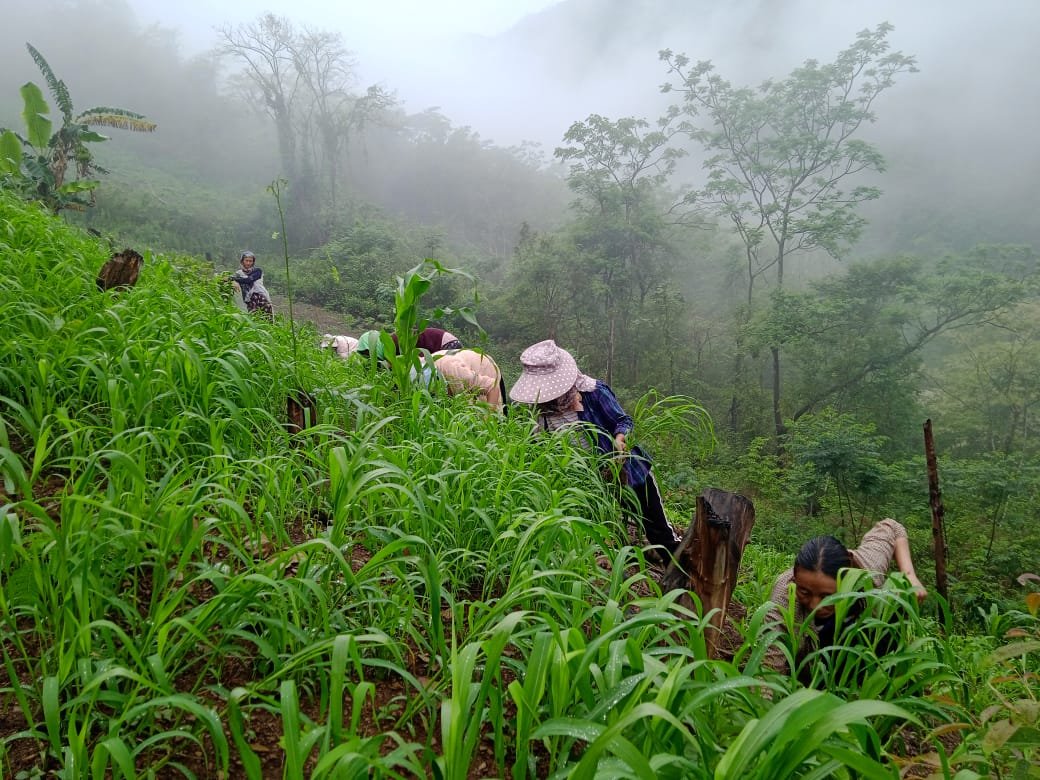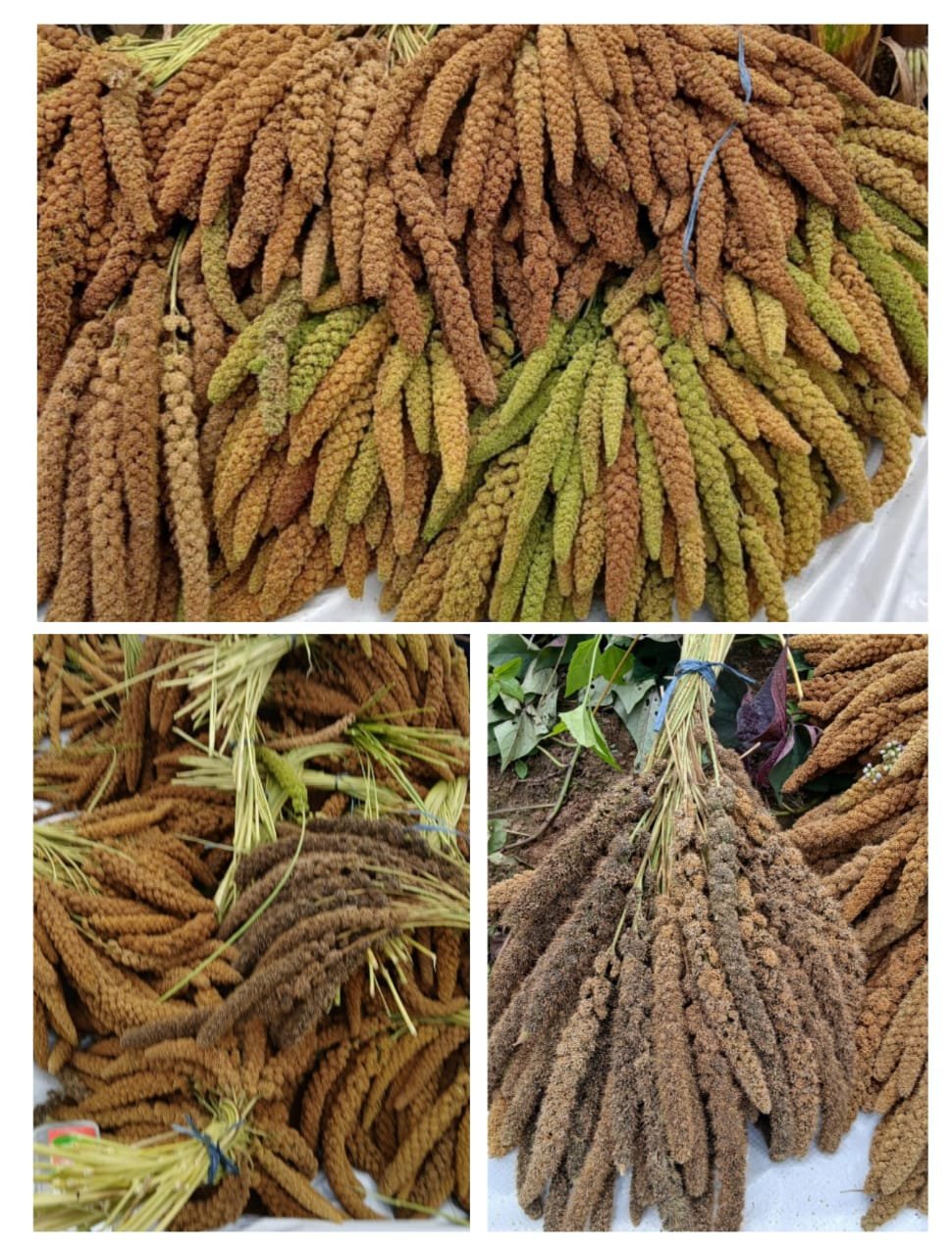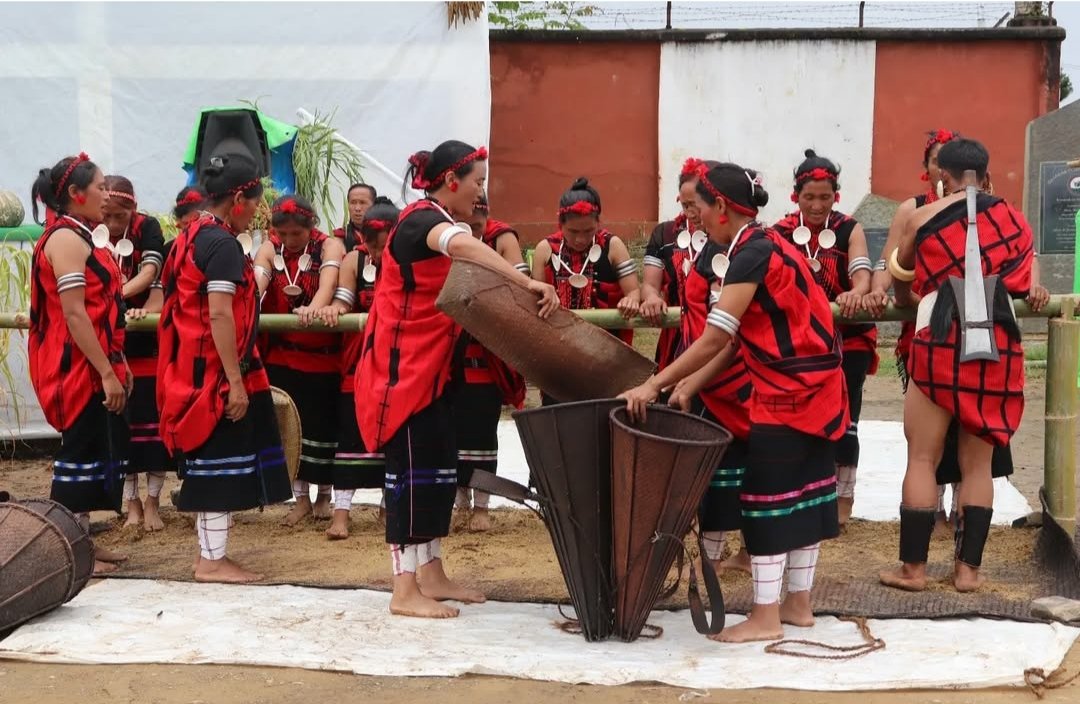The Millet Sisters is a women’s collective activity in Shamator district of Nagaland involved in promoting millet cultivation and its associated cultural and economic benefits. Their remarkable journey with millets began during a period of food scarcity in Shamator. They collaborate with organizations like North East Network (NEN) and the Millet Network of India (MINI) to organize millet festivals and awareness programs. These events highlight the importance of millets for community resilience, food security and cultural identity.
In an interaction with Nagaland Tribune, Millet Sisters shared that the group comprises of 40 members headed by a convenor, secretary and finance secretary. It all started in the year 2021 when the group laid focus on millets cultivation for festivals and emphasize the significance of millets from cultural, nutritional, livelihood and ecological perspectives.
They shared some of the challenges they faced in in 2020 when the COVID-19 pandemic hit the world– Shamator town, which is one of the most remote places in the state and home of the Yimkhiung community also faced it’s share of problems, especially scarcity of food produce. During this time, the Self Employed Women’s Association (SEWA) Shamator found out that even farmers don’t have indigenous food in their store, which marked a turning point to form the Millet Sisters committee. Most of the members did not own land, and they cultivate on leased land and have to pay taxes, which increased their financial burden doubled with crop damage by birds, leading to major losses.
Download Nagaland Tribune app on Google Play

Millets festival was introduced with the aim to encourage and support farmers. “Since the promotion of millets biodiversity in 2023, we can see the changes of strength resilience in the cultivation of millets among the farmers and preservation of millet seeds across Nagaland,” members of the Millet Sisters said.

Some health benefits of millets are proteins, contributing to better digestion, blood sugar management, heart health, weight management and antioxidant properties.
They also informed that the different varieties of millet cultivated in Shamator by approximately 90 farmers in 2025 are kotsaru, phuhjem muliam, yetupiak, kheak khih shipu, wuh ni muk Athsap and Tansung (pearl millet, sorghum, finger and foxtail millets).
According to the Millet Sisters, the impact of their efforts have empowered women farmers, promoted millets cultivation and diversified millet based products and organizations like SEWA Shamator are actively involved in these initiatives.
The Millet Sisters and their collaborators are working on strengthening millet-based food system through community participation, government support and the adoption of modern technologies and seeds diversity conservation, women empowerment, livelihood opportunity, nutrition value and Agro-climate suitability, they informed.

The Yimkhiung festival called the “Metumnyo” which is held August 6 to 8 every year is celebrated after the harvest of millets and involves prayers, thanksgiving and merrymaking. The festival includes activities like agro-biodiversity displays, traditional crafts, cultural performances and a farmers market.
The Millet Sisters, on this occasion, highlights to the farmers the importance of food security, reserves preservation and the cultivation of millets to expand the farming systems in Shamator district.

